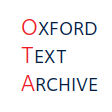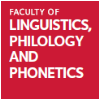This item is
Attribution-NonCommercial-ShareAlike 3.0 Unported (CC BY-NC-SA 3.0)
Publicly Available
and licensed under:Attribution-NonCommercial-ShareAlike 3.0 Unported (CC BY-NC-SA 3.0)
Files for this item
Download all local files for this item (165.09 KB)

- Name
- interfmt-1458.txt
- Size
- 14.5 KB
- Format
- Text file
- Description
- Version of the work in plain text format
@style(comments yes)
;; STANDARD.FMT - default Sprint style sheet
@style(counter SectionNumber)
@tct("-" "-@|")
@macro(label() = "@tag(@eval SectionNumber)")
@macro(Title() = "@value(@eval(text)Title)")
@macro(NeedSpace() = "@havespace(@eval,n "@newpage")")
@macro(kern() = "@hsp(-@eval)")
@macro('"' "@notct(")")
@macro(ifodd(v,y,n) = "@if((@eval(v))&1,y y,n n)")
@macro(makeodd() = "@newpage@if(page&1,else "@blankpage()")")
@macro(makeeven() = "@newpage@if(page&1,"@blankpage()")")
@macro[TabDivide() = "@tabset()@case{@eval,
1 "@tabset(.5 line)",
2 "@tabset(.333 line, .667 line)",
3 "@tabset(.25 line, .5 line, .75 line)",
4 "@tabset(.2 line, .4 line, .6 line, .8 line)",
5 "@tabset(.167 line, .333 line, .5 line, .667 line, .833 line)",
6 "@tabset(.143 line, .286 line, .429 line, .572 line, .714 line, .857 line)",
7 "@tabset(.125 line, .25 line, .375 line, .5 line, .625 line, .75 line, .875 line)",
8 "@tabset(.111 line, .222 line, .333 line, .444 line, .556 line, .667 line, .778 . . .

- Name
- marks-1458.txt
- Size
- 3.55 KB
- Format
- Text file
- Description
- Version of the work in plain text format
@style[fill no] @modify[hang, indent -14 char] @headert[@=Pinihas Bunggu's Story @=Orya Language, Recorded in Guay, November 1985] @header[@=Pinihas Bunggu's Story @=Orya Language, Recorded in Guay, November 1985] The glosses in this paper reflect the attempt by the researcher to follow Foley and Van Valin [@I<Functional Syntax and Universal Grammar>, Cambridge University Press, 1984]. An analysis of this text will appear in a collection of anthropology studies published by the Summer Institute of Linguistics, Dallas. ABBREIVIATIONS used in GLOSS LINES: @begin[hang, columns = 2] 1sg first person singular 1pl first person plural 2dl second person dual 2sg second person singular 2pl second person plural 3dlM third person dual male 3sgF third person dual female 3sgM third person singular male 3sgF third person singular female ADJ adjective ALREADY already (a modal) AM am . . .

- Name
- pinihas1asc-1458.txt
- Size
- 28.78 KB
- Format
- Text file
- Description
- Version of the work in plain text format
FORMAT B:ANTHRO.FMT
STYLE Paper 10.5 inches,TopMargin 4 lines
@tct("�" "e �")
@tct("�" "i �")
@Modify(Hyphens, numbered "%<%;-%]")
@Modify(Numbered, font draft, indent -10, spacing 1, justify
no, above 3, below 3)
BEGIN HEADER
Draft Version: I Too Am A Man
END HEADER
Draft Version:
BEGIN CENTER
I TOO AM A MAN
How manhood is measured, and how scores are settled:
Pinihas Bunggu, Simon Ti Eis, and Phil FieldsBEGIN
ENOTEPinihas Bunggu narrated the story that became the basis of
this article. Simon Ti Eis filled out the background history and
cultural meanings of the various customs described. Phil Fields
was responsible for the translation and overall organization of
the analysis.END ENOTE
END CENTER
For the Orya, successfully killing an enemy traditionally
marked the transition to manhood, and was the normal prerequisite
for being able to marry. Victorious men were given the right to
to wear a nose piece which corresponded to the sex of their
victim as their badge of ma . . .

- Name
- pinihas2asc-1458.txt
- Size
- 28.08 KB
- Format
- Text file
- Description
- Version of the work in plain text format
HEADINGB Mr. Umal's Mistake: The theme of Pinihas' discourse was the murder of Mr. Umal, which was different in many respects from the previous killings and gives rise to further revelations relevant to Orya war practices and manhood. Umal, whom Pinihas referred to as Mister. (Tuan from Indonesian), was the district officer of the governmentBEGIN ENOTEPinihas reveals quite a different view of the Dutch government compared with Martin Maware, whose narration was the basis of the article Of Paradise Lost. The Orya people also remember the Dutch for forcing them to carry large burdens as coolies, for forcing the people to work without pay, and for beating people who were lazy or uncooperative. The Dutch also did not like people to spend long periods of time in the jungle away from their villages, and this was resented as it interfered with the normal hunting and gathering life style of the Orya people.END ENOTE, a man from Ambon. His headquarters were in Bonggo village on the coast. . . .

- Name
- umal1itx-1458.txt
- Size
- 37.07 KB
- Format
- Text file
- Description
- Version of the work in plain text format
@format[c:inter.fmt] @headert[@=@DR[@b[Pinihas Bunggu's Story] @=Orya Language, Recorded in Guay, November 1985]] @header[@=@DR[@b[Pinihas Bunggu's Story] @=Orya Language, Recorded in Guay, November 1985]] @rf[1] @tx[Maesa, Tuan Umal, maesa, Yakobasa aning] @mb[mae -sa tuan Umal mae -sa Yakoba-sa aning] @mg[that one-PVT Mr. Umal that one-PVT Yakoba-PVT hide] @tx[gulgweka, maehap, sap nolbwak Nos�n] @mb[gul-gwe -ka mae -hap sap nol -blak Nos�n] @mg[FO -REPET-3sgM-PAST this-PURP BECAUSE PL-TAKE FO-MIO-PAST Nos�n] @tx[swehap.] @mb[swe -hap] @mg[deceased-BEN] This is about Mr. Umal, who tried to hide Yakoba (repeatedly) because she had already been given to Nos�n. @rf[2] @tx[Hw�na man aning gulgweka.] @mb[hw�na man aning gul-gwe -ka] @mg[so WAS hide FO -REPET-3sgM-PAST] So he hid her (repeatedly). @rf[3] @tx[Sudah, hw�na Markus swe zep aningkim] @mb[sudah hw�na Markus swe zep . . .

- Name
- umal2itx-1458.txt
- Size
- 52.14 KB
- Format
- Text file
- Description
- Version of the work in plain text format
@rf[84] @tx[Asya hw�na Tahyal zep mo taka zen,] @mb[asya hw�na Tahyal zep mo ta -ka zen] @mg[immediately however Tahyal THEN POS shoot MO-3sgM-PAST he] @tx[sindol dan ik dannak.] @mb[sindol dan ik dan -nak] @mg[cuscus bone shin bone-LOC] Then right away Tahyal shot him, with a cuscus bone tipped arrow in the leg. @rf[85] @tx[Desa w�r gweblanna, waken z� gw�] @mb[de -sa w�r gwe-bla -n -na waken z� gw�] @mg[that-PVT decorate BE -because of him-INF-TOP over there live] @tx[ara, Tidores bak w�r gweblaka.] @mb[an -la Tidores bak w�r gwe-bla -ka] @mg[PRES -3sgM Tidores honor decorate BE -because of him-3sgM-PAST] The one who was decorated for his death lives over there, Tidores. @rf[85.from other informant] @tx[[Zen deng tyaka, zen hen nokwakam] @mb[ zen deng ta-ka zen hen nokwa -kam] @mg[ he gave sec . . .

- Name
- umaldoc-1458.txt
- Size
- 990 bytes
- Format
- Text file
- Description
- Version of the work in plain text format
.fo n
UMAL1.ITX first half of interlinear text
UMAL2.ITX second half of interlinear text
PINIHAS1.ASC first half of cultural analysis
of the Umal text
PINIHAS2.ASC second half of cultural analysis
of the Umal text
MARKS Abbreviations used in morpheme glosses
All of the above are pure ASCII files. The files were
formatted for printing using Sprint (by Borland). The
format markers in the file are easily deciphered, so people
using other text processors will be easily able to reformat
the texts using automatic find and replace procedures.
INTER.FMT is the style sheet used by Sprint to format the
interlinear text. It would be useful only to other Sprint
users.
Please note that the draft of the cultural analysis paper
included is a pre-publication draft. It should accompany
the interlinar text, as the text is very hard to follow even
from the free translation. The commentary in the paper
makes it more understandable. . . .




